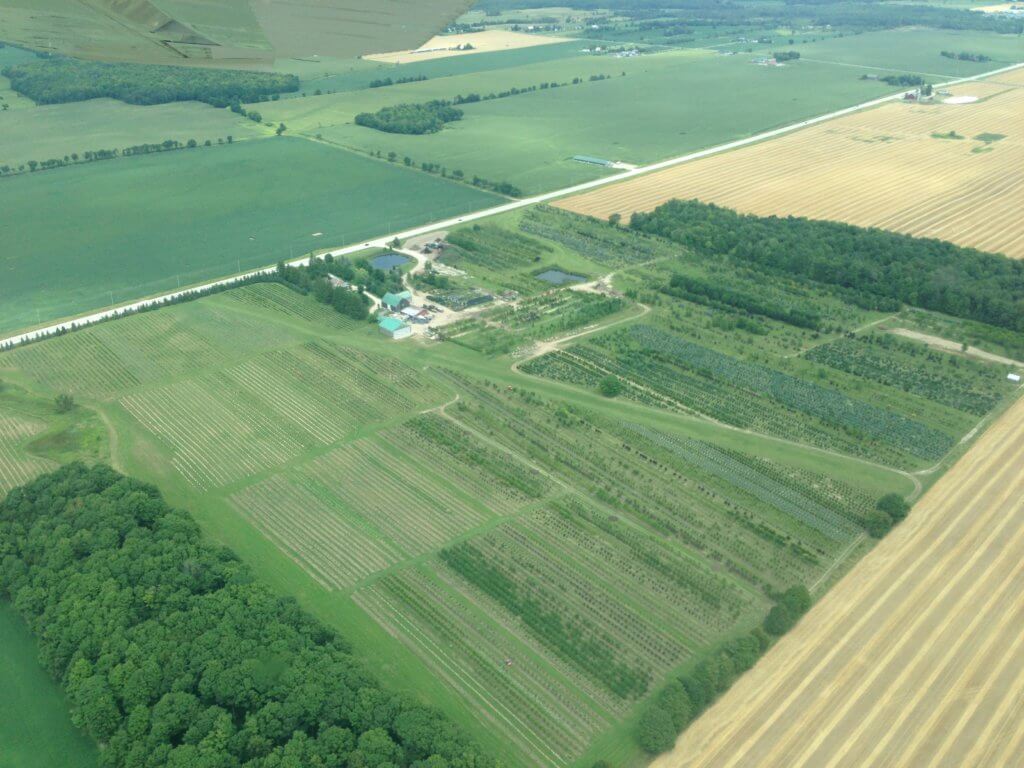Estimated reading time 5 minutes, 15 seconds.
A commercial pilot who fought a proposed wind turbine development near two aerodromes in Southern Ontario hopes the case will have an impact across the country.
Kevin Elwood, a pilot who owns the Clearview Aerodrome near Collingwood, Ont., was among the opponents of a wind project suspended after an environmental review tribunal’s decision earlier this month.

“My hope is that this isn’t a ruling that’s just referenced or taken as a precedent within the province of Ontario,” said Elwood, who is also a municipal councillor in Clearview Township.
“I think that this is for aeronautics and aerodromes, it’s for all of Canada–across Canada–that locating large, physical structures in close proximity to aerodromes is a hazard to flight safety.”
Elwood had long-standing concerns about the proposed wind development, which would have seen eight large wind turbines erected near the takeoff and landing areas of Clearview Aerodrome and the Collingwood Regional Airport.
At both aerodromes pilots operate mainly on visual flight rules, and Elwood raised concern about the effect that turbines close to the runways would have on pilots trying to land.
“During takeoff and landing, it’s probably the busiest portion of a flight,” he said. “So a pilot is busy … without introducing a physical obstacle in the flight path–in close proximity to the flight path.”
The shortest distance between four of the proposed turbines and the end of a runway at Collingwood Regional Airport is in the range of 3,078 to approximately 4,000 metres, according to the tribunal. Most aircraft flying into the airport would cover 4,000 metres in 65 seconds.
The two remaining turbines were to be located about 4,500 metres and 5,000 metres from the end of the runway, with travel times of 73 and 81 seconds, respectively.
Six of the proposed turbines would be within 1,500 metres of the end of a runway at Clearview, with travel times of 24 seconds. Among the safety concerns cited in the tribunal’s ruling is the turbulence wind turbines create.

The tribunal also found the wind development would likely cause serious and irreversible harm to an endangered bat species.
Wpd Canada, the company behind the proposed wind development, did not respond to a request for comment from Skies.
An estimate on the company website says the proposed wind project would feed more than 39 million kilowatt hours a year into the local electricity grid, equivalent to the average annual power usage of 2,200 homes.
While not opposed to green energy, the president of the Canadian Owners and Pilots Association (COPA) also had safety concerns about the project.
“I’m really happy with the outcome,” said COPA president Bernard Gervais. “And I hope we did create a precedent that municipalities and service companies and whoever will be building things like this, they will certainly consult with aerodrome proponents in the future.”
A source at the Collingwood Regional Airport said people at the facility are happy about the tribunal’s conclusions.
The tribunal said it is prepared to provide an opportunity for parties to make further submissions on appropriate remedies to the situation, should an opportunity be requested.
It adjourned the proceeding to a telephone conference call to determine next steps in the appeal. Elwood said it’s hoped the conference call will occur on Friday.
“I’m encouraged by this ruling, that the tribunal is protecting public safety and the safety of all pilots and passengers,” he said.
“This is important for not only general aviation but commercial aviation across Canada, and other jurisdictions should respect this tribunal’s ruling when approving proposals to erect obstacles in close proximity to aerodromes–be it the province of Alberta or the province of Nova Scotia.
“I think there’s something to be learned here.”
He pointed to the Ontario government and its Green Energy Act as a source of blame for the situation.
“This struggle between a proponent’s objectives and the community’s safety was caused by the Green Energy Act,” he said.
“The proponent, Wpd, has probably followed the process. I’m just saying that they followed a process and we followed a process, and there was conflict.
“Who caused the conflict? The province, because they never respected aeronautics in the Green Energy Act.”








